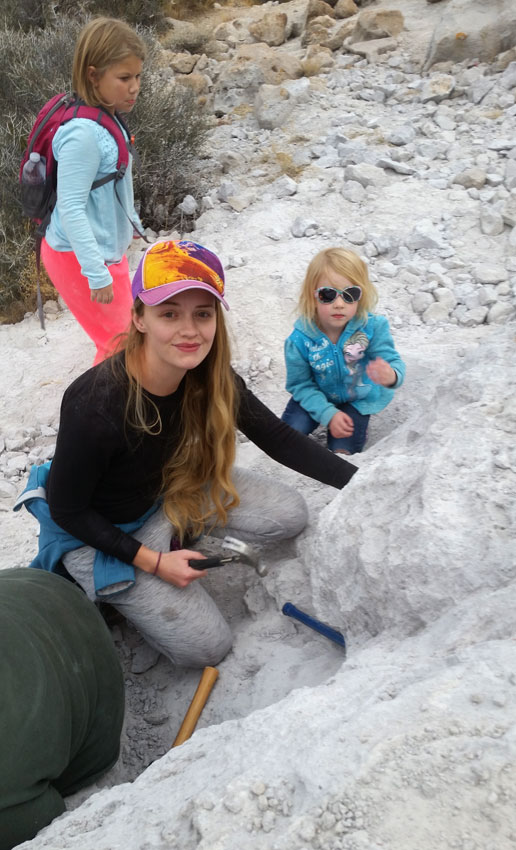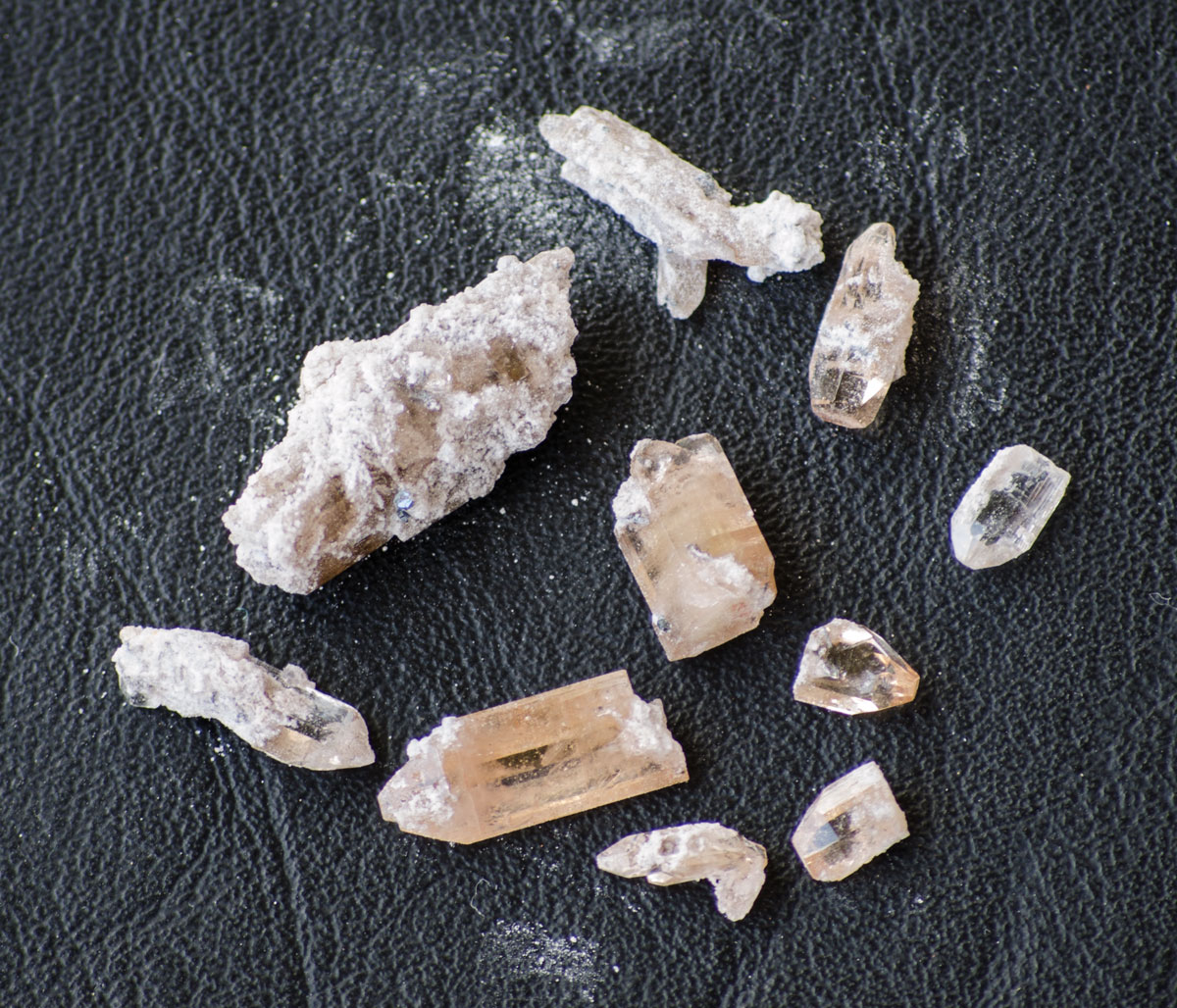By Xanthe Aintablian, November, 2017
My mother really wanted to try her hand at finding red beryl (also known as bixbite, or red emerald) in the Utah mountains. Despite being rare, Utah holds two of the three locations red beryl is found. The prime location, the Violet Claim in the Wah Wah Mountains of Beaver County, is a private mining site. However, neighboring Topaz Mountain, part of the Thomas Mountain Range in Juab County, has produced smaller, but still rare and beautiful, red beryl.
It had been ages since my family had been out to the Topaz Mountain area. We were likely all children then, and now have families of our own. We loaded our trucks and minivans, caravaning out to the Thomas Range. After a few confusing minutes of following my mother’s rockhounding book map, we backtracked to where we thought the site was. As it turns out, Google Maps will lead you right to the main quarry, or Site A, as some maps detail. There are other good sites around the mountain, and there is a private, fee-use area for a private touring company.
There were 15 of us, 7 adults and 8 young children, scattered around the lower hills when we began our search. All of us felt we would be excited to find anything sparkly, whether topaz, quartz, or the elusive red beryl. I began my search cracking open a few round geode-looking grey rocks, hoping to see quartz inside, but had no success.
Some of my nieces and nephews almost immediately began cracking open rocks and seeing some pretty little pieces. We began to have some luck sifting through the dirt and small rock debris, finding little pieces of topaz. It became a strategy to walk around, look for the sun glinting on a shiny rock, and then keep your eyes fixed on that exact spot. When you moved closer, the glare disappeared and you’d have to look carefully in that spot to see what crystal had caused the sparkle. Most of the time, even strong glares proved to be quite small crystals. But I occasionally found something more interesting.
My mother began chiseling into large boulders of the white rhyolite volcanic rock. It is in this white rock that most topaz and red beryl is found. Once she’d hit upon a rather impressive chunk of topaz, we all congregated in the same area. We used chisels, mallets, sledge hammers, screwdrivers, and hammers to pick away the rock as delicately as possible. We were all impressed with the piece of amber-colored topaz she worked out of its hiding place.
We picked at several more locations. We’d get excited if we saw dark specks located near or next to the topaz, hoping it was the red beryl. We never did see any of that rare, red, raspberry colored gem, but did hit upon one more productive site near the end of our excavation. I began to scrape at the inside of a hole. It seemed like a likely spot because it was located below a large crack in the white rock, and crystals often form in porous locations with cracks or hollow pockets.
After I began taking several good pieces of topaz from the hole, everyone in the family got a chance to pick at it. There were enough pieces we found to go around, and everyone walked away with a nice handful of little topaz bits and pieces.
The kids had fun running around and climbing on boulders when they became bored with chiseling. There were a few other people there in the area, but not very close to where we were working. For a late-November day that we expected to be chilly, the weather was quite nice.
If you have a lunch, some shade or a jacket (depending on what time of year you go), your tools (I’d recommend bringing a sifter plate to sift through the dirt and minerals), and a few hours, then you can have a marvelous time looking for beautiful secrets in the rocks at Topaz Mountain.


